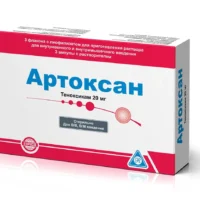Description
Ibunorm Baby Suspension 100 mg/5 ml. 100 ml
Ingredients
Each 5 ml of Ibunorm Baby suspension contains 100 mg of ibuprofen.
Dosage
The recommended dosage for infants is:
- 2-3 months: 2.5 ml every 6-8 hours
- 4-11 months: 2.5 ml every 6 hours
Indications
Ibunorm Baby suspension is indicated for the relief of fever and mild to moderate pain in infants.
Contraindications
Do not use Ibunorm Baby suspension if your child:
- Is allergic to ibuprofen or other NSAIDs
- Has a history of gastrointestinal bleeding
- Is under 2 months old
Directions
Shake well before use. Use the provided measuring device to ensure accurate dosage. Do not exceed the recommended dose.
Scientific Evidence
Ibuprofen, the active ingredient in Ibunorm Baby suspension, is a nonsteroidal anti-inflammatory drug (NSAID) that works by inhibiting the production of prostaglandins, which are chemicals in the body that cause inflammation and pain. Studies have shown that ibuprofen is effective in reducing fever and relieving pain in children.
Clinical trials have demonstrated the efficacy of Ibunorm Baby suspension in providing rapid and long-lasting relief from fever and pain in infants, making it a trusted choice for parents and healthcare providers.





